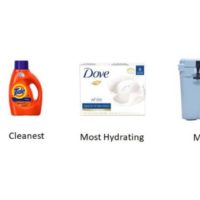
Written by Jesse Doubek – CEO at Doubek Digital Media
Online marketing and sales changes fast these days.
Our world is accelerating, and while at times our natural feeling for what should work is right…
Oftentimes, the key to success is the opposite of what we think. And it’s only through looking at data and real life experiences that we can find the truth, and use it to reach our goals.
So here’s a selection of the most relevant online marketing and sales statistics for influencers pulled from a great Hubspot article.
#1: RESPOND FAST
A Harvard Business Review article called “The Short Life of Online Sales Leads” shows how an analysis of more than 2,200 U.S based companies found that you’re 7x more likely to have a meaningful conversation with decision makers when you attempt to reach your lead within the first hour of their request.
#2: HALF OF ALL EMAILS GET DELETED
The average person deletes 48% of their emails each day. What can you do?
Create consistent, quality content that people want to read.
#3: USE THE RIGHT WORDS
The best words to put in your email subject line are:
- Demo
- Connect
- Cancellation
- Apply
- Opportunity
- Conference
- Payments
The most ineffective words are:
- Assistance
- Speaker
- Press
- Social
- Invite
- Join
- Confirm
#4: DON’T YELL AT PEOPLE.
All caps subject lines hurt response rates by about 30%, according to Boomerang’s analysis of 300,000 emails.
#5: MAKE IT PUNCHY
The sweet spot for subject line length is 3-4 words. Shorter or longer (in general) gets a lower response.
#6: DUMB IT DOWN
Emails written at a 3rd grade reading level are 36% more likely to get a reply than those written at a college reading level. Want to know what level you write at? Use this readability tool and see what you get.
Surprisingly, this is harder than it seems – the text in this blog post up to this point is written at an 8th grade reading level (oops!)
#7: ASK GOOD QUESTIONS IN EMAILS
Emails containing between 1 and 3 questions are 50% likelier to get replies than emails without.
#8: ASK GOOD QUESTIONS ON THE PHONE
Knowing that questions work well in emails, it’s not surprising that they work equally well on the phone.
Gong, a sales conversation intelligence platform, analyzed 519,000 discovery calls and found that there’s a relationship between the number of questions a rep asks and their chances of success.
But don’t overdo it. The sweet spot is asking 11 – 14 questions spread throughout the call and focused on your prospect’s pain points and objectives.
#9: USE COLLABORATIVE AND CONFIDENT LANGUAGE
Words like “we,” “us,” “our,” and “together” work better than “you,” “I,” “me,” and “your.”
Also throw into your vocabulary terms like “certainly”, “definitely”, and “absolutely”.
#10: AVOID THESE WORDS
Research from Gong shows these are the worst words to use on sales calls:
- “Show you how”: Drops close rates by 13% when used more than four times during a single call
- “Discount”: Decreases close rates by 17%
- “Contract”: Hurts close rates by 7%
- “Free trial”: Lowers likelihood of securing next steps by 5%
- Your company’s name: Harms close rates by 14% when used four-plus times in one call
- “Competitor”: Makes you less likely to get next steps or close
- “Million,” “billion,” “trillion”: Large quantities are too abstracts, so they harm close rates
#11: USE SOCIAL MEDIA
Forbes shows that 4/10 reps have closed between two and five deals directly thanks to social media, and half of revenue is influenced by social selling in 14 common industries. Check out this post on “how to beat rising ad costs and grow your business online” for more info.
#12: CREATE A POSITIVE SALES EXPERIENCE
According to Hubspot research, the key is:
Listen to their needs (69%)
Don’t be pushy (61%)
Provide relevant information (61%)
Respond in a timely manner (51%)
Here’s a great post on online automation.
#13: OFFER PAYMENT PLANS
Almost half of deals are lost because of budget constraints.
#14: ASK FOR REFERRALS
Referrals can be a huge business driver when done right. Harvard Business Review shows that 84% of buyers begin their buying process by asking for a referral.
92% of buyers trust referrals from people they know.
And after a great experience, 83% of customers would give a referral.
Thanks for reading, and if you enjoyed this article, please click one of the share buttons to post it for your friends.
For more ideas on how to develop an effective online lead generation and sales process, check out my free webclass called “Monetize Me: 11 Ways to Monetize Your Advice, Experience, and Story With Online Training Programs” here.
To Your Success,
Jesse Doubek




